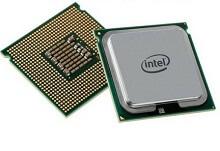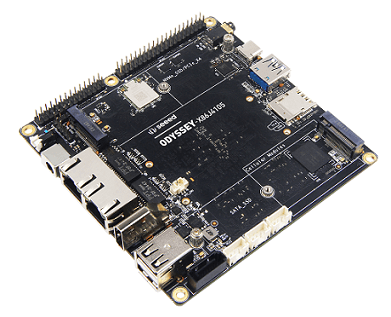What is X86?

x86 is an Intel CPU architecture used to denote the microprocessor family released after the original 8086 processor. It was originated with the 16-bit 8086 processor in 1978, which denotes the microprocessor family on the basis of the Intel 8086 and 8088 microprocessors. Generally, X86 is the term for Intel processors that comprises of 286, 386, 486, and 586 processors. In modern times, the term “x86” is used to denote to any 32-bit processor that ensures backward compatibility for x86 instruction set architectures. Since the full name of the processors is 80286, 80386, 80486, and 80586; therefore, the term x86 is short for 80×86. Typically, the “80” is used to avoid redundancy.
In starting, x86 began with an 8-bit instruction set, then as technology grew up day by day and it started with 16- and 32-bit instruction sets. In almost any kind of computer, X86 microprocessors can run; the computer servers and laptops, and from supercomputers to desktops. However, the software may not run by older processors that need to be optimized for newer x86 processors. Multiple new features have been added to the x86 architecture in its 40 years of existence. Its remarkable achievement is almost entirely backward-compatible.
Modern 64-bit processors may refer to as amd64; however, they are also known as x86_64. In the early 2000s, in terms of the amd64 label, it was at the forefront of 64-bit processing technology. The term x86 was made on the basis of the original Intel 8086 chip that was finishing with the number 86. The additional segment registers are included with the x86 processor that makes it capable of accessing several data segments at the same interval. Regardless of segment registers, it also supports code segment register and additional stack segment register.
A computer uses an Intel processor (not AMD or PowerPC) if its technical specification describes that it is based upon the x86 architecture. The numbers cannot be trademarked; they only offer a simple way to differentiate processor types. This is the reason that Intel’s 586 processor is called a Pentium processor. However, the numbers are used by software developers to refer processors.
With the help of setting the virtual 8086 mode flag, the x86 processor can be converted to a high-speed 8086 processor. The efficiency of the platforms on the basis of x86, with the help of virtualization, improves significantly considering operating systems, single servers, and a single application.
When dealing with the processing of data transactions and databases, enterprise workloads that involve high-end computing, x86, has significant disadvantages as compared to other processors. There must be considered scalability requirements, architecture, workload profile, and operating system while selecting x86-based platforms.
The reason why x86 refers to a 32-bit system while x64 refers to a 64-bit system is given below:
The 8086 processor was designed in a way, and more common that has the potential to understand bit machine language at first. They 8086 were known as the x86 architecture as they kept 86 at the end of the model number. The x64 is the architecture that enables 64-bit code, as it is the name for the extension to the x86 instruction set. It was called x86-64 at the time of initial development. However, later it was shortened to the current x64 as it was too long.
History of X86
The x86 processors began to manufacture by companies like DM&P, NexGen, UMC, AMD, Fujitsu, Cyrix, C&T, OKI, Siemens, STM; it was designed for personal computers and embedded systems. Initially, the 16-bit processors were compatible; however, 32-bit designs were designed and developed after much time. Around 1990, real quantities began to look with i386 and i486 compatible processors. The x86 or x87 processors are designed or manufactured by other companies; some are Weitek, National Semiconductor, ITT Corporation, and ULSI System Technology.
The Pentium brand name, following the fully pipelined i486, was released by Intel for their new set of superscalars x86 designs. The naming scheme of the x86 is now legally cleared. Other x86 vendors, for their x86-compatible products, had to choose different names. The first x86 microprocessors that were implemented register renaming to enable speculative execution, 5×86, 6x86MX (MII) lines of Cyrix designs, and the very efficient 6×86 (M1) were produced by IBM partnered with Cyrix.
Initially, versions of these microprocessors had the disadvantage of heat dissipation. The 6×86 processor also had a few minor compatibility problems. And, the Nx586 lacked a pin-compatibility and a floating-point unit. Also, when the K5 was introduced, it had a somewhat disappointing performance. The K5 included better Pentium compatibility, and as compared to the Pentium on integer code, the 6×86 was expressively faster. Other competitors like Transmeta, Rise Technology, and Centaur Technology were also there.
The C3 and C7 processors are very energy efficient processors of VIA Technologies, which have been sold for many years. They were designed by the Centaur company. The VIA Nano is the first processor of Centaur with superscalar and speculative execution. When the P5 Pentium, the Intel Atom, was introduced, it was also introduced at about the same time.
What is the difference between x86 and x64?
The major difference between x86 and x64 is that x64 refers to a 64-bit CPU and operating system, where x86 refers to a 32-bit CPU and operating system. The x64 has the potential to handle 8, 16, and some even 32GB physical memory, whereas a limited amount of maximum physical memory is included with the x86, 4 GB as bits are short for a number that only can be 0 or 1. This is the main reason that the CPUs have not the potential to use a lot of RAM as 1 and 0. That means 4.29 billion memory locations are contained by the 32-bit processor; all hold one byte of data that equates to approx. 4GB of memory.
Also, a computer that has a 64-bit processor can have the potential to work with both 32-bit programs and 64-bit programs, whereas a computer that has a 32-bit processor can only work with s32-bit programs. For that, the main reason is that their bit sizes are different from the basic level. As compared to a 32-bit processor, the 64-bit processors work more efficiently in most cases, especially when dealing with data in great chunks.
Users can find a folder name with Program Files (x86) on the C drive if you are using a 64-bit Windows on their computer. The 32-bit applications are stored in this folder, whereas the Program Files folder stores all the 64-bit apps that you have installed. In modern times, 4GB is not sufficient if you want to run heavy load tasks and multiple programs; however, 4GB is enough for basic tasks. Moreover, as compared to 32-bit chunks, a 64-bit system can process data in 64-bit chunks; hence it is more efficient. 64-bit systems are backward compatible that also have the potential to run 32-bit programs.
Example of x86 Single Board Computer (SBC)
In modern times, a computer is just not a small portable device that is only used for working on your knees or a big rectangular black box under the desk; they are present everywhere in terms of communicating, data storing, calculating, and others. ODYSSEY – X86J4105 is a Quad-Core 1.5GHz CPU that is based upon Intel Celeron J4105, which bursts up to 2.5GHz. All the features needed by a standard Computer are presented in the ODYSSEY – X86J4105; it also includes 64GB eMMC Storage, HDMI, SATA Connectors, 8GB LPDDR4 RAM, Audio Input and Output, onboard Wi-Fi/BLE, PCIe, Dual Gigabyte Ethernet Ports and more. It also allows users to program Arduino on the x86 platform as there is an ARM Cortex-M0+ MCU, an onboard ATSAMD21 Core.

